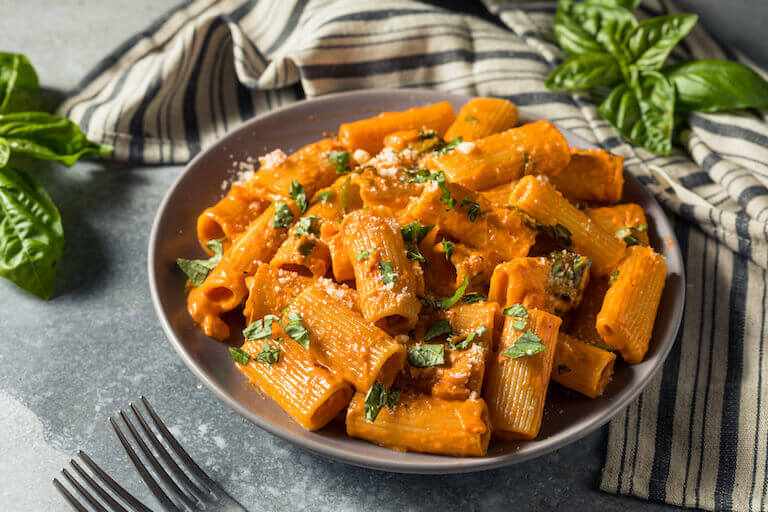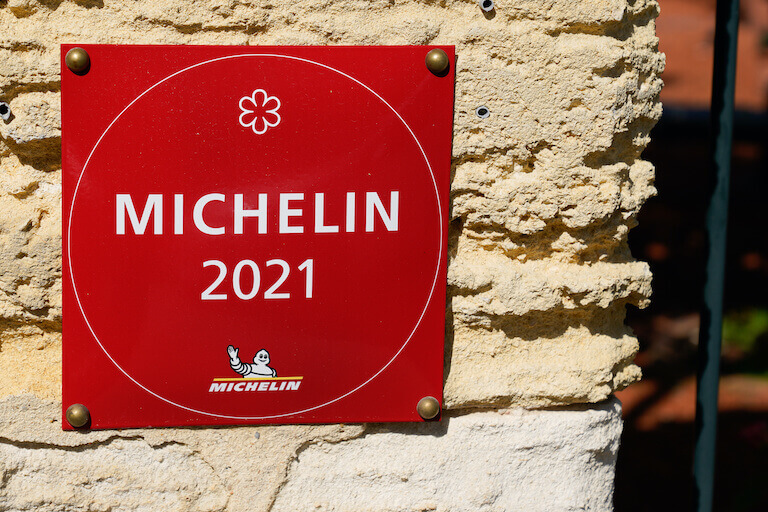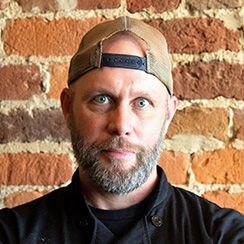A professional culinary portfolio is imperative when you seek employment, business opportunities, and career advancement. The premise is similar to that of a resume, in that you’ll highlight your skills and accomplishments, but the similarities end there.
A culinary portfolio is much more detailed and visual than a standard resume, and allows—requires, even—you to showcase your experience AND your personality. Let’s take a look at what makes for a high-quality culinary portfolio.
Format for Your Culinary Portfolio
First things first: should you create a physical or digital portfolio? In short, you should probably consider doing both.
In today’s world, the best practice is to create a digital portfolio as well as a physical copy of it. This way, the digital version can live on a website, and you can distribute the physical portfolio as needed. Online portfolios–websites or social media pages–have the advantage of nearly unlimited style choices and the use of non-static flourishes like video. Plus, they can be easily and frequently updated.
The physical copy of your portfolio is handy to drop off during an interview or at a business meeting. You can put photos, menus, brochures, and even your resume in a simple folder or invest in a more polished binder with pages.
Escoffier’s Career Services team can help you get started putting together a portfolio, a high-value tool in a competitive field that values practical skills as well as creativity.
How to Document Your Culinary Creations
Because visual elements are so important to a culinary portfolio, it’s crucial that you spend some time thinking about the photos you’ll use. Cooking is one thing, presentation is another; people build entire careers out of food photography.
You’ll sprinkle photos throughout your portfolio, and if your food doesn’t look good, that might reflect poorly upon you. On the other hand, appealing photos can help nudge you closer to the top of an employer’s or client’s list.
Here are some tips for food styling if you’re taking your own photos:
- Make sure you have good lighting. Natural light is usually best. You want well-lit photos and accurate colors and textures. But don’t use a flash—you don’t want reflections or shadows.
- Think about colors and textures. One tip: use a balance of colors from opposite sides of the color wheel. These complementary colors include reds and greens, blues and yellows, etc.
- Remember your plating skills: clean lines and shapes, a focal point, and the right garnish.
- Learn some basic editing skills. Nearly all photos need some adjustment. You can do a lot with introductory Adobe Photoshop or Adobe Lightroom skills. There are a variety of other photo editing tools on the market; Canva is another one that’s popular with amateurs and pros alike.
You don’t need to be a graphic design expert, but some layout basics can help your portfolio pop. This includes:
- Effective use of white space, or the empty spaces on a page between text and images. This helps guide the reader’s eyes to certain areas and highlight important points.
- Contrast. Used correctly, a good mix of colors and elements can give your portfolio visual interest.
- Alignment. Be sure your text and any graphics are properly aligned, which reduces clutter.
- Movement. This is the art of giving a page a sense of flow.

Presentation and photography skills can give your portfolio an advantage.
Seven Key Elements of an Impactful Portfolio
1. Autobiographical or About Me Page/Section
This first section includes a summary of your background and experience, any specialties, a description of your cooking philosophy, your goals, and your contact information. You should include a recent photo here too. A professional headshot is good, or a photo of you at work; make sure your face can be seen clearly and that you’re the only person in the photo. No group shots.
Social media information is optional, but be sure to include it if you have a large and engaged following. As for references, consider writing “References available upon request.” You want to be careful not to make names and numbers public, and to protect your and your references’ personal information. Consider setting up a separate email and phone number so you don’t broadcast your personal cell, for example.
2. Education and Work Experience
As with a resume, you want to broadcast your relevant education and work experience. A formal culinary education can make your portfolio stand out and demonstrate expertise. Also list any certifications, like those related to safety, allergens, dietary needs, and the like. When you list your work experience, include dates and places. You can also add professional development and externships in this section.
3. Professional Recognitions and Achievements
Have you won any cooking competitions, appeared as a podcast guest, or been featured on TV? Here’s your chance to humbly brag. Mention any awards, media, competitions, testimonials, reviews, and published works. If any of these are particularly prestigious and/or impressive, move them higher up in your portfolio. Ever worked in a Michelin Star restaurant? You want prospective employers and clients to know that right away. Also include relevant photos in this section— winning that competition, working with that celebrity chef, or other accomplishments.

Move your most prestigious accomplishments toward the front of your culinary portfolio.
4. Food Photos
Time to show off your creations. In the photo section, include pictures of your best dishes along with appealing descriptions. Remember to use good lighting and professional plating. Make the food look as delectable as possible. If you were a model or an actor, you’d send out glossy headshots that scream Hollywood; do the same here for your food.
5. Unique Recipes and Menus
Time to demonstrate your know-how. Include your personal recipes along with any menus (sample menus are fine) and brochures. Show off any signature dishes, demonstrate creativity with ingredients, and let them know you understand how to develop recipes.
6. Showcased Skills
If you haven’t already worked this in, now’s the time to highlight any particular culinary skills you honed in school, on the job, or elsewhere. These could include things like plant-based and holistic nutrition cooking techniques, or pastry skills…as well as budgeting, technology, and management know-how. You might want to broadcast skills that are specific to a particular job, or to demonstrate that you understand food entrepreneurship.
7. Services You Offer
Here’s your chance to describe your ideal job and find your match. This section piggybacks upon your showcased skills to explain what those skills can bring to your work. Perhaps you’re looking for catering jobs or you’d like to become a private chef. List those services here.
“My education with Escoffier has really given me a good foundation. It has filled a resume gap; it’s filled a professional gap and a skills gap. It has helped me in all aspects of my culinary career.”*
Lance McWhorter, Executive Chef/Owner, Culture ETX; Food Network “Chopped” Contestant; Online Culinary Arts Graduate
Strategies to Make Your Portfolio Stand Out in a Competitive Industry
A culinary portfolio is your chance to tell your story, and just like any good story, you want to grab the reader’s attention.
Remember to include your professional credentials. Your Culinary Arts degree, externships and internships, accomplishments—list anything that demonstrates expertise and a commitment to your craft.
Your presentation makes a big difference and can set your portfolio apart. Like a good story, the order matters as well as which details to use and which to leave out.
Networking Tips
Your ability to meet people is important in any culinary career, but don’t be scared! The best networking happens when you can relax, be yourself, and find common ground with others. You can network in a variety of ways, from in-person events to online groups. Check out this article on The 5 Important Networking Tips For All Chefs.
Common Mistakes to Avoid
You know what you want to hone in on, but it’s also important to be aware of mistakes to avoid when creating a culinary portfolio.
- Treating a portfolio like a resume—it’s not. Remember, a culinary portfolio is more detailed and visual than a resume. A resume is more like an overview, while a portfolio is like a story.
- Writing too much. Stick to what’s relevant to your goals and the position you’re applying for. Any stories in the “About Me” section should have relevance to your overall theme.
- Including contact info you don’t want to share publicly. This is especially important with your digital portfolio; don’t include your references’ contact information for the whole world to see.
- Inconsistency. Stay on message; if you’re a pastry chef, don’t showcase your tacos (even if they’re delicious).
- Forgetting to pay attention to the layout. Again, consistency is key. In this case, fonts, colors, and overall style should be easy to read and the same throughout. Even if you don’t have a brand identity, your portfolio should have a consistent style to it.
“When I hire an Escoffier student, I know that I’m going to get someone with talent, creativity, and passion for the art.”*
Holden O’Leary, Jolynn’s Food and Spirits Executive Chef, Boulder Culinary Arts Graduate
How to Keep Your Portfolio Updated and Relevant
Your portfolio is a living, breathing document that you’ll continually tweak. This is where the digital portfolio comes in handy, as it allows you to update frequently, practically in real-time. Did you make a TV appearance? Your digital portfolio can reflect that the same day!
Keep abreast of the latest trends so your portfolio can reflect tried and true principles as well as your ability to stay on top of what your audience (and clients) are interested in.
In short, try to update your portfolio when anything significant happens, but also consider revisiting it once or twice a year to update it with new information, assess whether the layout needs a refresh, or add a new headshot. A culinary portfolio truly shines when it blends experience with your personality and style.
Get Started on a Great Culinary Portfolio
It’s never too early to start building your culinary portfolio. You can start with your chef resume and flesh that out to create a portfolio that shines.
If you need more help with your resume or job search assistance, Escoffier students and graduates have access to Career Services help which can include resume writing assistance and interview preparation.
Contact us today to speak with our Admissions Department and find ways to jump-start your career with education and experience that can make your portfolio shine.
Enjoyed this article? Try these next:
- How to Become a Chef: The Essential Guide
- How Building a Personal Brand Can Benefit Your Culinary Career
- 10 Common Interview Questions for a Chef Position
*Information may not reflect every student’s experience. Results and outcomes may be based on several factors, such as geographical region or previous experience.

 “My education with Escoffier has really given me a good foundation. It has filled a resume gap; it’s filled a professional gap and a skills gap. It has helped me in all aspects of my culinary career.”*
“My education with Escoffier has really given me a good foundation. It has filled a resume gap; it’s filled a professional gap and a skills gap. It has helped me in all aspects of my culinary career.”* “When I hire an Escoffier student, I know that I’m going to get someone with talent, creativity, and passion for the art.”*
“When I hire an Escoffier student, I know that I’m going to get someone with talent, creativity, and passion for the art.”*

